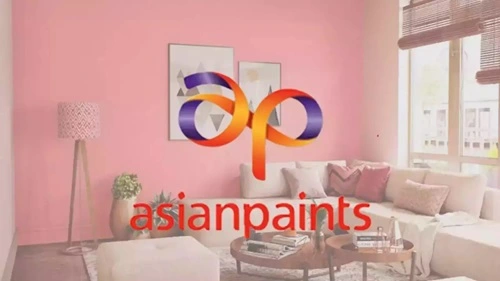Asian Paints is India’s largest decorative paint maker and Asia’s third-largest globally. Founded in 1942, the company has grown into a ₹36,183 crore revenue behemoth for FY 2024, with net income of ₹5,558 crore. However, recent quarters have seen mounting challenges—Q4 FY25 net profit dropped 45% YoY to ₹692 crore, missing estimates, with declining revenues and margin contraction. A fierce attack from Grasim’s Birla Opus, which took market share from 59% to roughly 52% in a year, intensified. With the Q1 FY26 results due July 29, market watchers are keen to see if urban demand and margin recovery materialize. Let’s explore the strategic position of Asian Paints via SWOT.

Strengths
1. Dominant Market Share: Holding over 50% share in decorative paints in India, Asian Paints enjoys unmatched brand trust, distribution reach, and retail presence.
2. Consistent Financial Growth & Profitability: Historically, the company has delivered 8–12% CAGR across five years, with Q4 FY24 revenues of ₹36k crore, and operating income of ₹7,215 crore.
3. Global Manufacturing & Distribution: Its presence spans 27 plants across 15 countries, serving over 60 nations, making it a formidable global player.
4. Technological Prowess & Supply Chain: Pioneering tech use—like supercomputers since the 1970s—and integrated ERP/SAP systems have enabled supply chain efficiency and cost management .
5. Strong Brand Equity: Among India’s top 20 brands, Asian Paints has high recall and loyalty, reinforced by sustainable and innovative branding.
Weaknesses
1. Over‑dependence on Decorative Paints: With decorative segment constituting ~90% of revenue, the company is heavily reliant on consumer housing demand.
2. Decline in Q4 FY25 Performance: Q4 FY25 saw a 4.3% YoY sales decline and a 45% drop in net profit, impacted by weak urban demand and disposal of Indonesian unit.
3. Underperformance in Industrial & Automotive Coatings: Despite having a presence, market share in industrial coatings remains low (~15%) compared to competitors like Kansai Nerolac.
4. Vulnerability to Rapid Consumer Trends: Shifts in consumer preferences demand agile production—overproduction or inventory lag pose challenges.
Opportunities
1. Infrastructure & Real Estate Growth: Rising urbanization, housing demand, and government initiatives (e.g., CLSS) boost decorative paint consumption.
2. Expansion of Industrial & Auto Coatings: Growing manufacturing and auto sectors offer opportunities to diversify into higher-margin industrial coatings.
3. Geographic Expansion in Emerging Markets: Using its existing plants in Africa and Southeast Asia, plus new manufacturing units, Asian Paints can scale exports.
4. Sustainable & Green Paints Demand: Rising consumer and regulatory demand for eco-friendly paints opens avenues for product innovation.
5. Digital & Design-Centric Services: Launching home décor solutions and digital visualization tools (Beautiful Homes) can deepen engagement and enhance value.
Threats
1. Aggressive New Entrants: Birla Opus’ rapid share capture (6.8%) and aggressive dealer discounts threaten margins and volumes.
2. Weak Rural & Urban Demand: Ongoing demand sluggishness—especially in urban areas—continues to dampen sales and margins .
3. Raw Material Inflation: Fluctuating prices of titanium dioxide, solvents, and pigments can compress margins without timely price pass-through .
4. Regulatory & Environmental Constraints: Cleaner production rules and paint VOC norms could raise compliance costs significantly .
5. Competitive Discount Pressure: Sustained discounting by rivals risks triggering a price war, impacting revenue and profitability.
Future Outlook
Recovery in Urban Demand: If Q1 FY26 shows signs of urban rebound, improved margins and stabilized revenues are likely, especially if new product mix supports recovery.
Margin Resilience through Scale & Leverage: Restored operating leverage and cautious price passes can support profitability despite input inflation.
Diversification into Adjacent Segments: Pushing into industrial coatings, green paints, and décor services can help reduce dependence on decorative paints and improve mix.
Geographic & Export Growth: Tapping into international demand and reinforcing its manufacturing footprint across Asia and Africa can create new channels.
Digital & Customer-Centric Acceleration: Strengthening digital services, predictive color tools, and home décor platforms may boost customer stickiness and premium adoption.
Competitive Strategy Recalibration: Asian Paints needs to balance pricing strategy and differentiation to counter discount-led encroachment by Birla Opus.
Asian Paints remains the category leader but is navigating a challenging competitive and demand environment. A rebound in urban spending, cost resilience, and diversification into industrial painting, décor services, and green coatings will determine whether it can consolidate leadership—or face market share erosion. The Q1 FY26 results on July 29 will be a pivotal indicator of its ability to regain momentum.